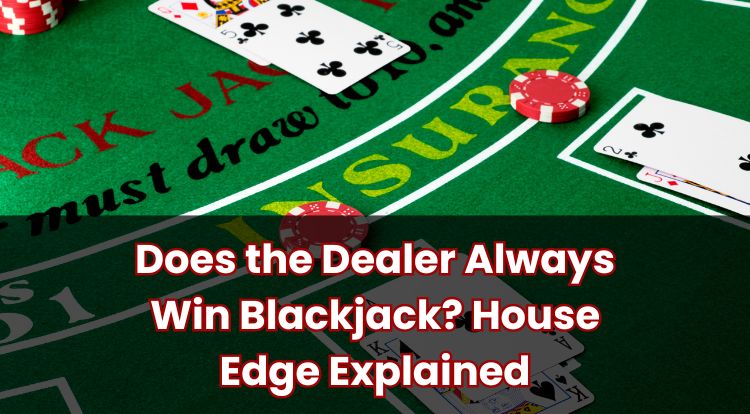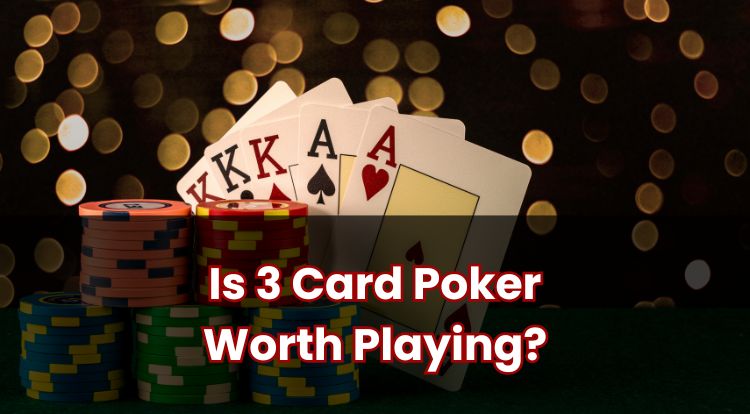Blackjack for Beginners: How to Play & Basic Rules Guide
Blackjack is one of the most recognised card games found in both online and land-based casinos across the UK. With simple rules and a clear aim, it is a good starting point for those new to casino games.
Whether you are trying blackjack for the first time or just curious about how it works, this guide explains the essentials in plain language so you can follow the flow of a round with confidence. Read on to learn more.
What Is Blackjack and Why Is It Popular in the UK?
Blackjack is a card game where you play against a dealer. The aim is to have a total closer to 21 than the dealer without going over. Number cards count as their face value, face cards are worth 10, and an Ace counts as either 1 or 11.
It is popular in the UK because it is easy to learn and plays at a good pace. You do not need anything more than a standard deck of cards or a digital table if you play online. Hands resolve quickly, which means you get plenty of decisions in a short space of time.
Many casinos offer European, American, and other variants. Each version tweaks the rules slightly, so the paytable and table signage are useful to review. Once you know the basics, moving between versions becomes straightforward.
If you decide to try your hand at blackjack, remember to do so responsibly and within your means; never wager more than you can afford to lose.
How to Play Blackjack for Beginners
A round of blackjack starts with players placing a wager within the table limits, for example £1 to £500. Two cards are then dealt to each player and to the dealer. In most UK games, player cards are face up, while the dealer shows one card and keeps one face down.
From there, the round becomes a series of decisions. Players choose to take another card, called a hit, or keep their total, called a stand. Some tables also allow a double down, which adds one card for an increased stake, or a split when the first two cards have the same value. These options depend on the table rules, so a quick glance at the game info could be useful.
If a hand exceeds 21, that hand is out of the round. After all players have acted, the dealer reveals the face-down card and plays to a fixed rule, usually drawing until reaching 17. Online games use tested Random Number Generators (RNGs) to determine cards, and physical tables use shuffling by hand or machine.
Basic Rules of Blackjack Explained
At its core, blackjack uses one or more standard 52 card decks. You compete only with the dealer, not with other players at the table. The target is a total as close to 21 as possible without going past it.
The actions available, noted earlier, are hit and stand, with split and double down sometimes offered. A hand of 21 with the first two cards is called blackjack. If both you and the dealer finish with the same total, the round is a push and your stake is returned.
Once everyone has played, the dealer completes their hand according to the fixed rule for that table. If the dealer goes over 21, remaining hands win. These simple foundations carry across most versions, even when small rule differences appear from one table to another.
What Are the Card Values in Blackjack?
Each card has a clear value, which makes hand totals easy to work out. Cards 2 to 10 equal their number. Jacks, Queens, and Kings are worth 10. The Ace can be counted as 1 or 11, whichever helps the hand most at that moment.
This flexible Ace creates two useful terms. A soft hand includes an Ace counted as 11, such as Ace 6 for a soft 17. If a further card makes the total too high, the Ace can switch to 1. A hard hand has no Ace counted as 11, for example 10 7 or 9 8, and cannot reduce its total in the same way.
No jokers are used in blackjack. Only the standard 52 cards are in play, though the number of decks can vary by table and version.
How Does the Dealer’s Role Work?
The dealer runs the round, deals cards, and follows fixed rules. One dealer card is visible and the other is face down until it is their turn to act. After players finish, the dealer reveals the hidden card and draws until the total reaches at least 17.
Some tables require the dealer to stand on all 17s. Others specify that the dealer must hit on a soft 17. You will usually see this printed on the table or shown in the game info. Another common difference is whether the dealer checks for blackjack when showing an Ace or a 10 value card. American rules often include this early check, while European rules typically do not. Knowing which approach your table uses could help you understand what might happen next.
When Should You Hit, Stand, Split or Double?
The best choice depends on two things, the strength of your hand and the dealer’s visible card. Strong dealer upcards, such as 7 through Ace, put more pressure on weaker player totals, while dealer upcards from 2 to 6 tend to be less threatening.
- Hit is useful when your total is low and the risk of going over 21 is minimal. For example, a hand of 9 4 benefits from another card far more often than it fails.
- Stand makes sense when further cards are likely to push the total over 21 or when your current total already competes well against the dealer’s upcard.
- Split is an option when the first two cards have the same value. Some pairs play well as two separate hands, especially when splitting gives you more chances to build strong totals.
- Double down increases your stake in exchange for one extra card. Players often use it when they hold a total that benefits significantly from a single draw, particularly against certain dealer upcards.
These choices are guided by probability, not guesswork. Many players use a basic strategy chart tailored to the exact table rules to keep decisions consistent over time.
Understanding Blackjack Table Layouts
A standard blackjack table is semi circular, with seats for up to seven players facing the dealer. Each position has a marked betting area for chips and a space where cards are placed during play.
Printed on the felt you will often see key rules and common payouts, such as Blackjack pays 3 to 2 and Dealer must stand on 17. Online tables mirror this layout on screen, with chip values and action buttons clearly shown, plus a help or info section for the full rules.
Becoming familiar with the layout makes it easier to follow the action and find the options available on your table.
What Are the Main Types of Blackjack Bets?
Blackjack centres on a main bet, with a few optional extras that some tables offer. It might help to know what each one does before you choose to use it.
- Main wager: Placed before any cards are dealt. If your final total beats the dealer without exceeding 21, you are paid at even money. A two card 21 is a blackjack and usually pays 3 to 2, unless the table states otherwise.
- Insurance: Offered when the dealer shows an Ace. It is an optional side bet, typically half your main stake, that pays if the dealer has blackjack. It has a higher house edge than the main game.
- Double down: Available on certain totals or all totals depending on the table. You increase your stake and take exactly one more card.
- Split: Used when your first two cards share the same value. You add a second stake the same size as your original and play two hands. Some tables allow further splits or restrict splits on certain cards.
- Side bets: Options such as Perfect Pairs or 21+3 pay for specific card combinations. They are entirely optional and have separate payout rates and odds.
Table signage or the on screen rules will show exactly which of these are available in the game you are playing.
House Edge and Payouts in Blackjack
Blackjack is known for offering a relatively low house edge compared with many other casino games. With standard rules and consistent decisions, the edge often sits around 0.5 to 1 percent, though it changes with table settings.
The payout for a player blackjack is commonly 3 to 2, so a £10 stake returns £15 plus the original £10. Some tables pay 6 to 5 for a blackjack, which increases the house edge. Ties result in a push and your stake is returned. Optional side bets can pay higher amounts, but they usually come with a higher house edge.
Rules that affect the edge include whether the dealer hits or stands on soft 17, the number of decks in use, whether doubling after a split is allowed, and how many times pairs can be split.
Is Blackjack a Game of Skill or Pure Chance?
Blackjack blends random events with player decisions. The cards come out in an unpredictable order, but the choice to hit, stand, split, or double is up to the player. Using a basic strategy aligned to the table rules helps reduce mistakes and keeps the edge as low as the rules allow.
The game still involves uncertainty. No decision can change the order of the cards or guarantee an outcome, and house rules remain in place at all times. Tools such as charts can support decision making, while external aids or unauthorised methods are not permitted.
Play Blackjack Online at Red Casino
Red Casino is fully licensed and regulated by the UK Gambling Commission (UKGC), with blackjack games that provide clear rules, published payouts, and in game help so you know where you stand before you place a bet.
You will find classic formats and modern variants, each with its own table limits and features. Deposits and withdrawals are straightforward, account security is taken seriously, and customer support is on hand to help with questions. You can also set deposit limits and use other account controls to manage your play.
If you would like to explore our blackjack tables, browse the games, read the rules for each one, and choose the version that suits how you prefer to play.
**The information provided in this blog is intended for educational purposes and should not be construed as betting advice or a guarantee of success. Always gamble responsibly.
*All values (Bet Levels, Maximum Wins etc.) mentioned in relation to these games are subject to change at any time. Game features mentioned may not be available in some jurisdictions.



